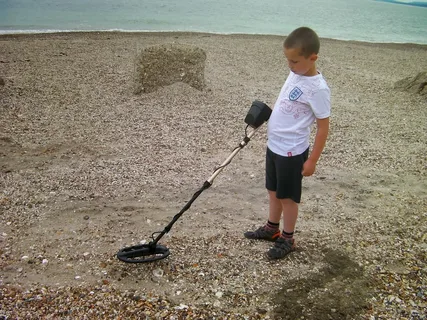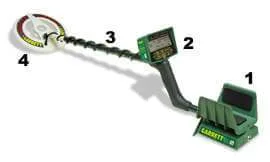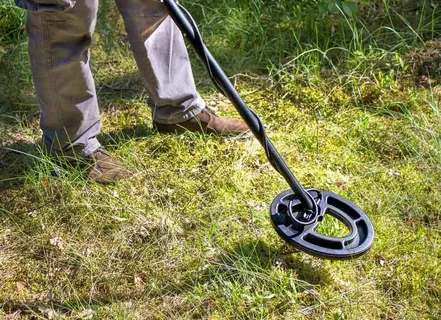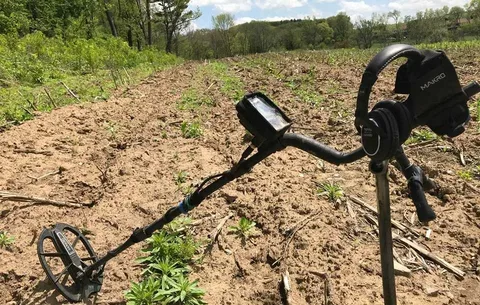Mining is an essential industry that involves the extraction of valuable minerals and resources from the earth’s surface. In order to excavate and process these materials, miners rely on a variety of tools and equipment specifically designed for the job. From drilling and blasting to hauling and processing, the success of a mining operation relies heavily on the efficiency and effectiveness of the equipment and techniques used. In this guide, we will explore the essential tools in mining, including the latest equipment and techniques, to help miners maximize productivity and safety in their operations.
“Essential Tools in Mining: A Guide to Equipment and Techniques” is a comprehensive resource for professionals and enthusiasts in the mining industry. The book covers a wide range of essential tools and equipment used in various mining operations, including exploration, drilling, excavation, and more. It provides detailed explanations of the functionality and application of different tools, as well as best practices for their use. The guide also includes information on the latest technological advancements and techniques in the mining sector, making it a valuable reference for anyone involved in mining activities.
The Essential Tools Needed for Mining Operations

Mining operations require a number of essential tools and equipment to successfully extract valuable minerals and resources from the earth. Some of the key tools needed for mining operations include:
– Drilling equipment: This includes drills and drill bits used to create boreholes in the earth for the extraction of minerals and resources.
– Blasting tools: Explosives and blasting agents are used to break up large rock formations and facilitate the extraction process.
– Excavation tools: Equipment such as bulldozers, excavators, and loaders are used to remove overburden and access the mineral deposits.
– Haulage equipment: Trucks, haul trucks, and conveyor systems are essential for transporting extracted materials to processing facilities.
– Safety gear: Personal protective equipment, ventilation systems, and other safety gear are crucial for ensuring the well-being of miners and workers in the mining operation.
In addition to these essential tools, mining operations also require support equipment such as power generators, pumps, and maintenance tools to keep the operation running smoothly. The specific tools needed can vary depending on the type of mining operation, the characteristics of the mineral deposit, and other factors. However, the tools mentioned above are essential for the success of any mining operation.
A Guide to the Top Tools Utilized in Mining Industry

The mining industry utilizes a variety of tools and equipment to extract and process minerals and ore. Some of the top tools utilized in the mining industry include:
1. Excavators and loaders: These heavy machinery are used to remove overburden and extract the ore from the ground.
2. Drill rigs: Used to drill holes for blasting or to extract core samples for exploration and analysis.
3. Crushing and grinding equipment: These machines are used to break down large rocks and ore into smaller pieces for processing.
4. Conveyors and crushers: Used to transport and process the extracted material throughout the mining operation.
5. Safety equipment: This includes personal protective gear, gas detectors, and ventilation systems to ensure the safety of workers in the mining environment.
6. Automation and control systems: These technologies are increasingly being utilized to improve efficiency and safety in mining operations.
7. Environmental monitoring tools: Used to monitor and manage the impact of mining activities on the surrounding environment.
8. Explosives: Used for blasting to break up overburden and extract ore from the ground.
Overall, the mining industry relies on a wide range of tools and equipment to carry out the extraction and processing of valuable minerals and resources. These tools play a crucial role in ensuring the efficiency, safety, and sustainability of mining operations.
Investing in High-Quality Tools for Efficient Mining Processes

Investing in high-quality tools for efficient mining processes can significantly improve productivity and reduce maintenance costs. These tools are designed to withstand harsh operating conditions and deliver consistent performance, which ultimately leads to higher output and profitability. Additionally, using reliable and durable equipment can minimize downtime and ensure the safety of the mining operation. By prioritizing the purchase of high-quality tools, mining companies can gain a competitive edge and achieve sustainable growth in the industry.
Maximizing Safety and Productivity with Modern Mining Tools

Maximizing safety and productivity in mining operations is crucial in ensuring the well-being of workers and the efficiency of the overall process. Modern mining tools play a significant role in achieving this goal. These tools include advanced technologies such as automation, remote operation, and real-time monitoring systems. By implementing these modern tools, mining companies can improve safety by reducing the need for workers to physically be in hazardous environments, while also enhancing productivity through greater accuracy and efficiency in the mining process. Additionally, modern tools can provide valuable data and insights that allow for better decision-making and overall optimization of mining operations. Overall, the use of modern mining tools is essential for maximizing both safety and productivity in the mining industry.
The Evolution of Technology and Tools in Mining Industry
The evolution of technology and tools in the mining industry has been a significant driving force behind increasing efficiency, safety, and productivity. Over the years, the industry has seen a shift from manual labor to the use of advanced machinery and equipment.
One of the most notable advancements has been the introduction of automated and remote-controlled machinery, which has greatly reduced the risks associated with physical labor in hazardous environments. Additionally, the use of drones and other advanced technologies for mapping and surveying has improved accuracy and speed in locating deposits.
Furthermore, the integration of digital technologies such as data analytics and artificial intelligence has enabled mining companies to optimize their operations, leading to increased extraction rates and cost savings. The implementation of these technologies has also facilitated better environmental management and sustainability practices in the industry.
Overall, the evolution of technology and tools in the mining industry has led to significant improvements in safety, productivity, and environmental responsibility. As technology continues to advance, the industry is likely to see further enhancements in efficiency and sustainability.
Choosing the Right Tools for Different Types of Mining Operations
Different types of mining operations require different tools and equipment to ensure optimal efficiency and safety. For surface mining, equipment such as bulldozers, haul trucks, and shovels are commonly used. Underground mining, on the other hand, requires specialized tools like continuous miners, roof bolters, and shuttle cars.
The choice of tools also depends on the type of mineral being mined. For example, coal mining may require different equipment than gold mining due to differences in the nature of the materials being extracted.
Environmental factors also play a role in tool selection. For instance, in open-pit mining, the type of rock and soil being excavated will determine the type of tools and machinery needed to efficiently remove overburden and access the desired minerals.
Safety regulations and ergonomic considerations also influence tool selection in mining operations. Tools and equipment must meet strict safety standards to protect workers from potential hazards and minimize the risk of accidents.
In summary, choosing the right tools for different types of mining operations involves a thorough assessment of the specific requirements of the site, the type of mineral being mined, environmental factors, and safety regulations. By carefully considering these factors, mining companies can ensure the efficiency and safety of their operations.
Key Tools Every Miner Should Have in Their Toolbox
– A sturdy pickaxe is essential for breaking through rock and ore in the mine.
– A high-quality headlamp or flashlight is important for visibility in dark underground tunnels.
– Safety gear such as hard hats, gloves, and steel-toe boots are essential for protecting against potential hazards.
– A rock hammer is useful for chipping away at mineral deposits and identifying different types of rock.
– A compass or GPS device can be helpful for navigating through the complex network of mining tunnels.
– Explosives and detonators are necessary for blasting through particularly tough rock formations.
– A first aid kit is crucial for treating minor injuries that may occur while working in the mine.
– A portable ventilation system can help ensure a safe supply of fresh air in poorly ventilated areas of the mine.
– Geological tools such as a hand lens or a magnifying glass can be useful for examining rock samples and identifying mineral deposits.
Innovative Tools Revolutionizing the Mining Industry
The mining industry has seen significant advancements in recent years with the introduction of innovative tools and technology. These tools are revolutionizing various aspects of mining operations, including exploration, extraction, safety, and environmental sustainability.
One such tool is the use of drones for aerial surveys and mapping of mining sites. Drones equipped with high-resolution cameras and sensors can provide detailed and accurate data, helping in the exploration and planning stages of mining operations. This technology allows for more efficient and cost-effective exploration of potential mining sites.
In addition, the use of advanced data analytics and artificial intelligence (AI) has become increasingly prevalent in the mining industry. These technologies can process and analyze large volumes of data to optimize mining processes, improve productivity, and identify potential risks. For example, AI-powered systems can predict equipment failures, enabling proactive maintenance and reducing downtime.
Furthermore, the implementation of autonomous vehicles and machinery is transforming the way mining operations are conducted. Driverless trucks, drills, and other equipment can increase efficiency, reduce operating costs, and enhance safety by minimizing human exposure to hazardous working environments.
Moreover, advancements in 3D printing technology have enabled the manufacturing of custom parts and components for mining equipment, leading to reduced lead times and maintenance costs.
Overall, these innovative tools are reshaping the mining industry by streamlining processes, increasing safety, and promoting environmental sustainability. As technology continues to advance, we can expect further transformation and optimization of mining operations.
Understanding the Role of Tools in Sustainable Mining Practices
See also: american mining company
Understanding the role of tools in sustainable mining practices is crucial for minimizing the environmental impact of mining operations. Tools such as advanced drilling equipment, precision blasting technology, and high-efficiency machinery play a significant role in reducing resource consumption, optimizing energy use, and minimizing waste generation. Additionally, the use of innovative tools and techniques can help improve worker safety and reduce the carbon footprint of mining operations. By leveraging the capabilities of modern tools, mining companies can align their practices with sustainability goals and contribute to a more environmentally responsible industry.
The Future of Mining: Advancements in Tools and Equipment
The future of mining will witness advancements in tools and equipment that will revolutionize the industry. With the integration of technologies such as automation, artificial intelligence, and digitalization, mining operations will become more efficient and safer. Advanced drilling and blasting technologies will enable precise and controlled extraction, while autonomous equipment will enhance productivity and reduce operational costs. Furthermore, the use of predictive maintenance and real-time monitoring systems will minimize downtime and optimize equipment performance. Overall, these advancements in tools and equipment will shape the future of mining by improving operational efficiency, minimizing environmental impact, and ensuring the safety of workers.










